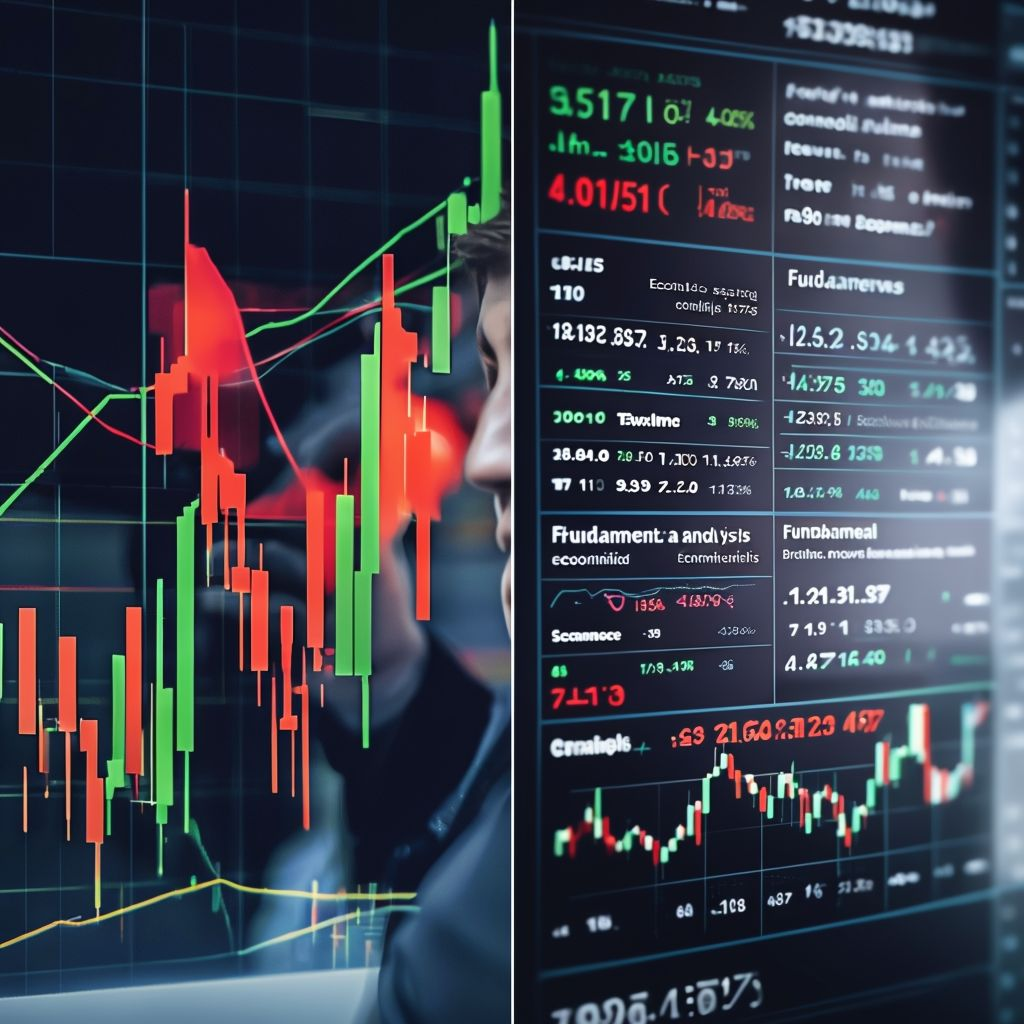Successful trading relies on a solid strategy, and two primary approaches dominate the financial markets: technical analysis and fundamental analysis. While both have their merits, choosing the right one depends on your trading style and goals.
1. What is Technical Analysis?
Technical analysis focuses on price charts, patterns, and indicators to predict future price movements. Traders who use this approach believe that all market information is already reflected in price action.
Key Components:
- Charts & Patterns: Candlestick patterns, trend lines, and support/resistance levels.
- Indicators: Moving Averages, Relative Strength Index (RSI), MACD, Bollinger Bands.
- Volume Analysis: Evaluating market strength based on trading volume.
✅ Pros:
- Works well for short-term trading (day trading, scalping, swing trading).
- Provides clear entry and exit points.
- Applicable across multiple asset classes (stocks, forex, crypto, etc.).
❌ Cons:
- Does not consider economic or financial fundamentals.
- Can produce false signals in unpredictable markets.
- Requires constant monitoring and quick decision-making.
2. What is Fundamental Analysis?
Fundamental analysis examines economic, financial, and geopolitical factors to determine an asset’s intrinsic value. Traders using this approach focus on long-term market trends and price movements.
Key Components:
- Economic Indicators: GDP, inflation rates, employment data.
- Company Financials (For Stocks): Earnings reports, revenue growth, balance sheets.
- Central Bank Policies: Interest rate decisions, monetary policies.
- Market Sentiment & News: Geopolitical events, supply-demand factors.
✅ Pros:
- Ideal for long-term investing and position trading.
- Helps understand the overall health of an asset or economy.
- Provides a broader perspective beyond price charts.
❌ Cons:
- Not effective for short-term trading.
- Market reactions to news can be unpredictable.
- Requires deep research and analysis.
3. Key Differences Between Technical and Fundamental Analysis
| Feature | Technical Analysis | Fundamental Analysis |
|---|---|---|
| Focus | Price action and chart patterns | Economic and financial data |
| Timeframe | Short-term trading | Long-term investing |
| Tools Used | Indicators, trends, volume | News, earnings reports, GDP |
| Market Reaction | Quick, based on price action | Slower, based on financial changes |
| Best for | Scalping, day trading, swing trading | Position trading, long-term investment |
4. Which One Should You Choose?
- Use Technical Analysis if: You prefer short-term trades, rely on charts, and want precise entry/exit points.
- Use Fundamental Analysis if: You focus on long-term investments and want a deep understanding of market conditions.
- Combine Both: Many traders use a hybrid approach, leveraging fundamentals for overall market direction and technicals for timing trades.
Conclusion
Both technical and fundamental analysis offer valuable insights. The best strategy depends on your trading style, goals, and risk tolerance. Learning both approaches can help traders make more informed decisions and enhance profitability.

